Though mobility has been a characteristic of human society since the very beginning,1 the ways in which people moved and, indeed, which parts of society did the moving can vary greatly. Interest in mobility itself as a subject of academic inquiry in recent years has led scholars to investigate mobility in the past, particularly in relation to the transition period in which chiefdoms and city-states were first coalescing and connecting (through alliances) across the European continent. Although the onset of the Bronze Age—called “Europe’s first golden age”2—varied by region, archaeologists generally set the start at c. 2000 BCE.
Before use of the wheel was common, waterways were the highways of Europe and beyond, thereby providing the principal axes for the formation and maintenance of network connections and the movement of goods and people. The European Bronze Age was very dynamic, and was characterized by long-distance trading and a warrior culture based on codes of kinship and hospitality.3 Just to give an idea of scale, archaeologists estimate that the combined weight of ores imported to Scandinavia from sources in Central Europe, Iberia, and the British Isles clocked in at over one metric ton every year during the Bronze Age.4–7 It comes as no surprise, therefore, that such a large degree of cultural and material exchange as was present at this time could not have taken place without significant human movement. However, until fairly recently, scholars have had to guess at how that movement looked, and—importantly—who it was that did the moving. To this end, they looked for inspiration from ethnography and anthropology, seeking to see whether there were any relevant models related to human movements which could be gleaned from more recent societies.
In the late 1960s, the French anthropologist Claude Lévi-Strauss suggested a marriage movement model for the formation of allied groups comparable to those which archaeologists had identified in later European prehistory. The first widely accepted model of female mobility in prehistory suggested that women moved once in a single direction when they married into their husbands’ homes. According to Lévi-Strauss, the exchange of spouses between outward-marrying (exogamic) societies was a form of “ultimate gift” which established social ties both short- and long-distance.8, 9 While Lévi-Strauss’s proposal posited that the exchange of either female or male marriage partners could be the backbone of sociopolitical/economic alliances, when European prehistorians first adopted his model, they began to associate the foreign spouse/ultimate gift role almost exclusively with females rather than males.
Although one might at first argue that this was a sexist assumption, there was initially some archaeological evidence that seemed to support this way of thinking. At that time, the origins of most skeletons found on archaeological excavations were deduced by the type and kind of material(s) or grave goods with which they were buried. In the late 20th century, Bronze Age scholars increasingly made note of richly buried women who were interred with exotic grave goods (i.e., which were not local to the burial region). These women became known as “Fremde Frauen” [lit. Foreign Women], and were associated with the foreign spouses as described by Lévi-Strauss whose marriages founded and maintained the network of social, political, and economic alliances on which the dynamism of the Bronze Age world depended.10–12 Although the underlying assumptions supporting the model in which elite women married and then moved to their husband’s home were and are periodically brought into question,13, 14 in many ways, archaeological understandings of mobility during the Bronze Age stagnated along gender lines. See Table 1. In this way, men were seen to be based in the same areas where they were born and were generally thought to either remain locally as an established chief and/or to move repeatedly for warfare, slaving, or trading. By contrast, if a female’s grave showed evidence for movement (e.g., non-local grave goods/materials), archaeologists generally assumed that the woman in question was an elite who had moved uni-directionally to unite her home group via a marriage alliance with that of her husband-to-be.

A “new” method for archaeology
The application of strontium isotope analyses and other scientific techniques used directly on human remains has been a game changer in archaeology. Previously, archaeological context (the things with which people were buried) was the only indicator of possible mobility. However, with new techniques, mobility could be researched directly in the bodies of the persons under study. In 1985, Ericson utilized strontium isotope analysis (a scientific technique which had until then been used mostly by geologists and ecologists) to see if he could identify changes in residence patterns for the Chumash peoples of the North American Pacific coast.16 Since that time, strontium isotopic tracing as a means of detecting mobility of single individuals has become a very popular scientific form of investigation in archaeology worldwide. See Figure 1.
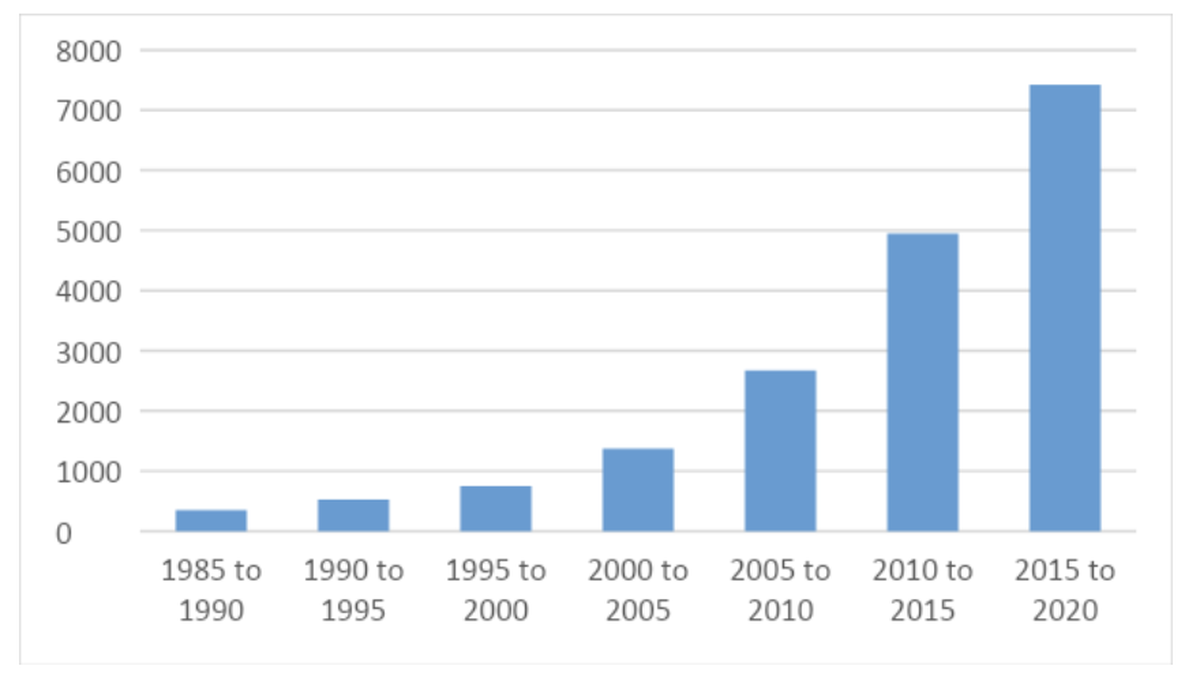
less
How isotopic tracing works
Although the geological and biochemical background for strontium isotopic tracing is complex, one can get a very rough understanding of the basic principles of how strontium is incorporated into human body tissues by an analogy from the world of baking: Imagine putting a vanilla bean in a pot of sugar. Over time, the sugar will become flavored by the vanilla. If the vanilla bean is taken away and, say, a fresh orange rind put in its place, the sugar will retain the vanilla flavor for a while, but the odor and flavor of the orange will eventually dominate. Through what we eat and drink, living beings take on the chemical “flavor” of the area(s) from which they nourish themselves, and that “flavor” is stored in the living skeleton. If we move away from a “vanilla bean” area, and begin to eat and drink from food and water sources from a different area with a different geology (an “orange rind” area), over time the chemical “flavor” stored in our bones will change to reflect that new area.
Here is where it gets interesting. There are some parts of the body (like tooth enamel and some parts of the skull) which will not take on new chemical “flavors.” These very special tissues preserve the “flavor” of the area in which someone had been living at a specific point in their lifespan (e.g., when the enamel of a crown of a tooth was forming, or during the month(s) when a segment of nail or hair was growing). By comparing the geobiochemical characteristics (called baselines) of the burial area against the signature(s) of different bodily tissues, or simply by comparing the signatures (“flavors”) of different bodily issues against one another, it may be possible to determine whether (or not) someone migrated during their lifetime.
Determining the location from which someone may have originated is far more difficult. Some areas may have baselines that resemble one another, or whose characteristics may partially overlap. In addition, many parameters must be taken into account in order to interpret the results properly (e.g., the processes of soil-formation, and the proportion of different food sources and their respective strontium concentrations, etc.), e.g.17
As more results of strontium isotopic tracing studies on an exponentially increasing number of prehistoric individuals become available, archaeometrists (researchers who do archaeological science) have a larger body of material against which they can make comparisons with archaeological and historical models and from which they can begin to pick out migration trends relative to, for example, gender and/or cultural change. While some new studies have sometimes provided evidence for the “Fremde Frau” model described above (in which women traveled uni-directionally as marriage partners), others have shown that there were also many other kinds of mobility in which prehistoric women engaged.
less
The Skrydstrup Woman: A foreign spouse?
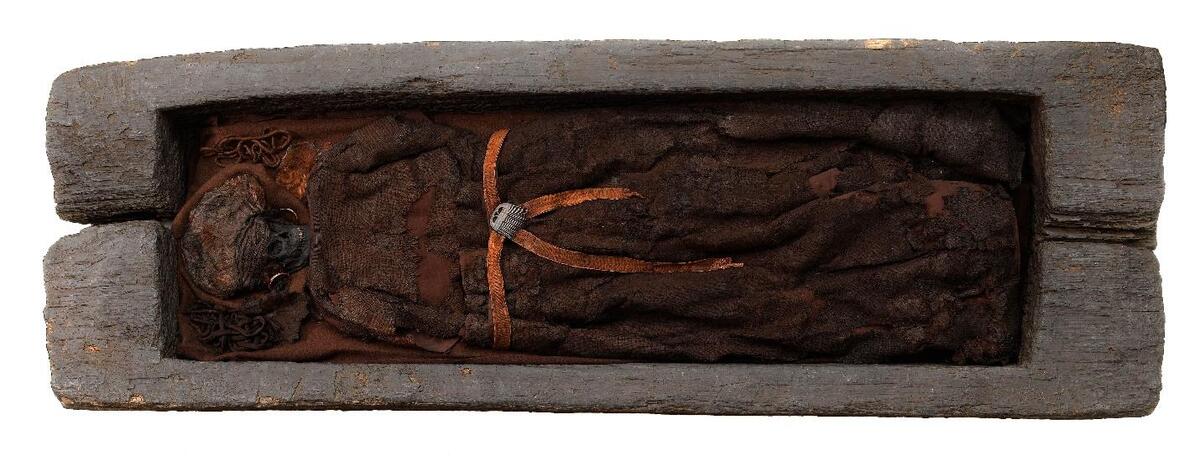
The Skrydstrup Woman was interred in the central and primary grave under a monumental grave mound between 1300 and 1100 BCE in what would become Haderslev County in southern Denmark.18 Skrydstrup Woman was buried in an oak coffin and laid on an oxhide, a common practice for elites of her time.19 What is particularly remarkable about her burial are her beautiful clothes, including a short-sleeved embroidered wool blouse and the large textile wrapped around her legs tied at the waist by a belt, as well as her hair net, horn comb (at the belt), and the two large spiral gold rings situated near her ears.20–22 Her long hair (measuring approximately 23 inches/60 cm) was arranged in a highly elaborate style which, in addition to the embroidered blouse, has found other contemporary corollaries elsewhere in Denmark.23, 24
Although the site was excavated in 1935, in 2017 it came under investigation once again by the “Tales of Bronze Age Women” project at the National Museum of Denmark. In their investigation, Frei et al.25 sampled 17 segments of Skrydstrup Woman’s very long hair (samples covering approximately 17 inches/42.5 cm with only two areas of partial overlap) as well as the woman’s tooth enamel from her first and third molar teeth for strontium isotope analysis.25 These analyses allowed the research team to investigate her provenance and to create a high-precision chronology of Skrydstrup Woman’s final years and months (through the hair samples), enabling the biogeochemical characterization (via isotopes of strontium) of the area where the Bronze Age female had been living on a near monthly basis. Their analyses revealed that Skrydstrup Woman’s first and third molars as well as some of her hair segments showed similar radiogenic values. Interestingly, these values were above the established 87Sr/86Sr baseline for present-day Denmark, while the remaining hair sample segments which reflected the years prior to her death yielded lower strontium isotope values, which did fall within the Danish baseline (Bornholm excluded).25
By combining the various strontium isotope analyses with new anthropological investigations of her remains—which were based on the evaluation of the osteological material, CT images, and 3D visualizations—the research team estimated Skrydstrup Woman to have been between 17 and 18 years at death, and suggested that she may have traveled to Denmark at the age of approximately 13 or 14 years.25 This age could correspond well with the estimated age of first period (menarche) and marriageability in prehistoric times.26 When all the data is examined as a whole, it seems as if Skrydstrup Woman’s mobility involved a single uni-directional move from a place outside of present-day Denmark to the area where she was buried at Haderslev County, Denmark, a pattern that Reiter and Frei term “point-to-point” mobility.15 See Table 2. As such, Skrydstrup Woman’s mobility pattern echoes that proposed for a foreign “Fremde Frau” spouse who moved upon marriage to solidify/maintain social, political, or economic ties between groups.
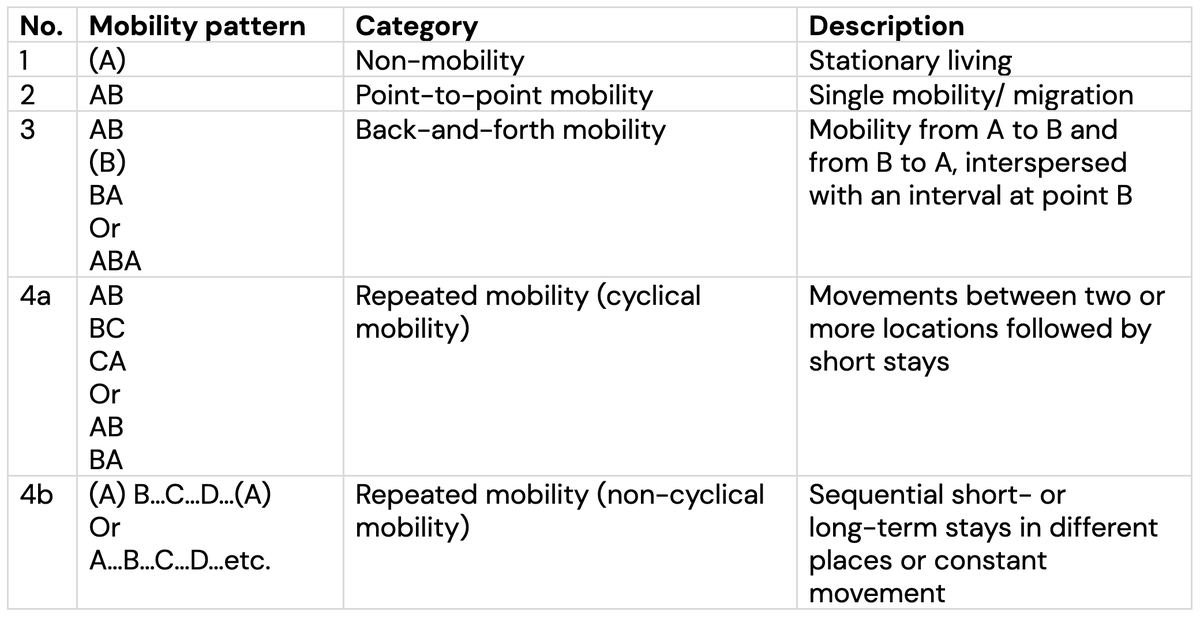
The isotopic evidence from Skrydstrup Woman is far from the only case to be interpreted in favor of the traditional model for female movement on occasion of marriage. A predominance of female exogamy has also been identified in earlier Neolithic Corded Ware and Bell Beaker cemeteries27–30 as well as in Bronze Age cemeteries from northern Italy,31, 32 southern Germany,33, 34 and Slovakia.35
Complementary male mobility linked to Bronze Age warfare has been suggested by the results of isotopic research in Germany at the Tollense Valley battlefield36 as well as at the “warrior” cemetery at Neckarsulm.37 The results from Tollense and Neckarsulm have both been interpreted as being indicative of a high amount of non-local male individuals, which may partially support the male marauding/trading mobility patterns that archaeologists had originally proposed. However, equal amounts of male and female mobility and/or variations in predominately male or predominately female mobility have been identified in Neolithic Hungary,38 Copper Age Britain,39, 40 and Bronze Age Sweden41 and Denmark.42
less
The Egtved Girl: A traveler priestess?
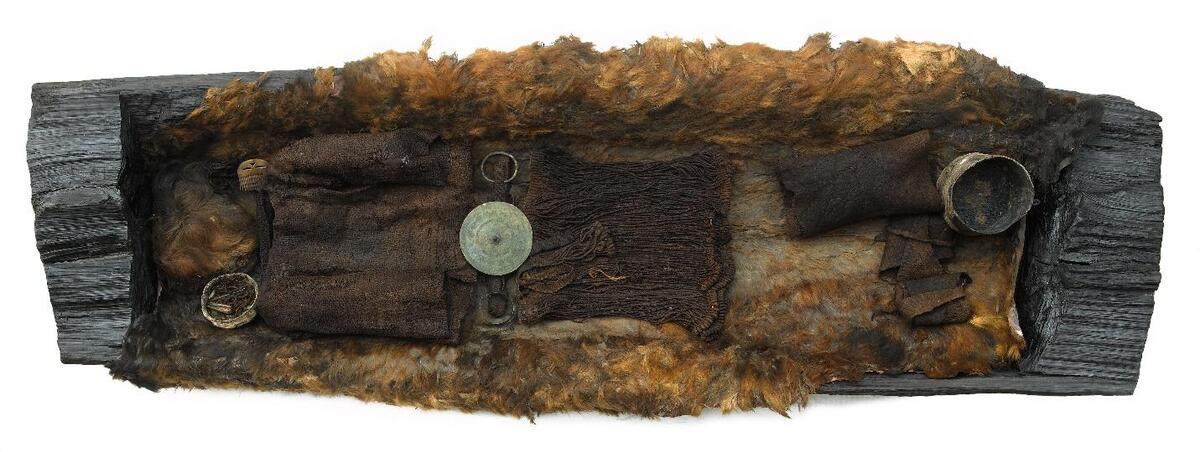
One female for whom new analyses have suggested quite a different mobility pattern from that of the Skrydstrup Woman is the Egtved Girl. The Egtved Girl was a contemporary of the Skrydstrup Woman, as she was buried in an oak coffin within a monumental burial mound in Jutland during a similar period.43 Although the Skrydstrup Woman and the Egtved Girl both wore short wool blouses,44, 45 the Egtved Girl’s skirt was very different from that of the Skrydstrup Woman. The Egtved Girl’s short corded (or string) skirt is an iconic clothing item from the Bronze Age which has been found on approximately 60 other individuals across Europe, and is sometimes associated with a ritual role.46, 47 For this reason, as well as the bronze sun disc found at her waist, the Egtved Girl has often been interpreted as a sun-priestess.47 In addition to the corded skirt and belt disc, Egtved Girl’s grave included two bronze bracelets,43, 48 a comb, a bark container with part of the cremated remains of a 5- or 6-year-old child, a textile bundle with the rest of the remains of the child,49 and a bucket with residues of what seems to have been beer.43, 50, 51
The Egtved Girl’s age at death was also comparable to that of Skrydstrup Woman; it was estimated to be between 16 and 18 years.49 Although these females seemed to have died at similar ages, they have been described differently by scholars since they were first discovered (perhaps due to the different lengths of their skirts). While we would today normally refer to both of them as women, to avoid misunderstandings we refer to them here in the ways in which they are named in the literature.
For their analyses, Frei et al. sampled three pieces of one of Egtved Girl’s thumbnails, four segments of her hair, and the enamel of one of her first molar teeth for strontium isotope analysis.49 They interpreted the results of those analyses to suggest that the Egtved Girl had been mobile during her lifetime. Furthermore, when the results of the multiple samples were placed in chronological order, the authors suggested that the Egtved Girl was non-local to present-day Denmark and that, in the time prior to her death, she appeared to have engaged in repeated movements, potentially between distant areas (i.e., probably between an area within present-day Denmark and another area outside present-day Denmark).49 If Egtved Girl’s mobility pattern as described above were to be applied to Reiter and Frei’s mobility model,15 she could be said to exhibit either “back and forth” or “repeated” mobility.
Another, somewhat similar case of “back and forth” mobility has been identified for the well-known male individual known as “Ötzi the Iceman.” Dating from the Copper Age, Ötzi’s remains were discovered in the Italian Alps and were analyzed in relation to mobility.52, 53 In their publication, Ruff et al. suggested that Ötzi’s repeated mobility may have been related to trading or to transhumance.53
less
The Ølby Woman: A powerful and well-connected local leader?
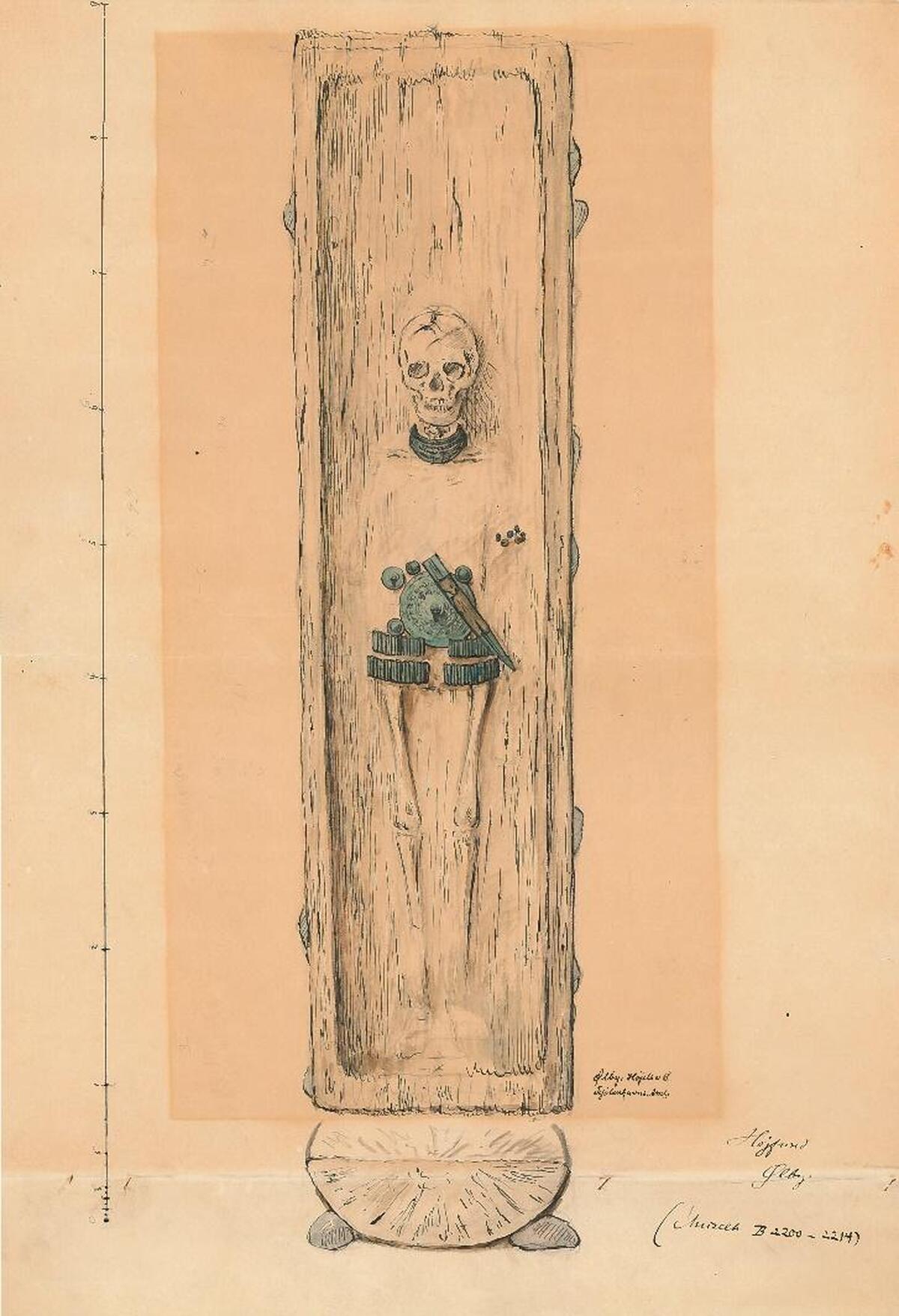
Although the grave of the Ølby Woman is similar in many respects to the two other Bronze Age individuals described above (i.e., Skrydstrup Woman and Egtved Girl), her suggested mobility pattern could not be more different. Ølby Woman is considered to be the richest female Bronze Age oak coffin burial from Denmark. Similar to Skrydstrup Woman and Egtved Girl, Ølby Woman was also buried within a monumental burial mound.55 Furthermore, she wore a corded skirt similar to that of the Egtved Girl. During excavations in 1880 at Ølby near Køge in Zealand,50, 51 archaeologists uncovered a poorly preserved skeleton as well as the remains of an animal hide, wool textiles,44 a bronze neck collar, some small spirals of bronze, a dark blue glass bead imported from Egypt58–60 and two amber beads (which are thought to have made an arm bracelet), a belt plate, the broken-off portion of a bronze sword in a leather sheath, four bronze tutuli, and 125 bronze tubes which likely served as the rich decoration of a corded skirt.22, 56, 61, 62
In their provenance study of Ølby Woman and some of her bronze grave goods, Reiter et al. sampled Ølby Woman’s tooth enamel from her first, second, and third molar teeth for strontium isotope analysis.54 The authors interpret the results to indicate that Ølby Woman may have lived mostly locally within the borders of present-day Denmark (Bornholm excluded) until her demise. According to Reiter and Frei’s model,15 this qualifies as “non-mobility.”
However, her exotic grave goods point to long-distance connections. For example, the recent analyses of three of Ølby Woman’s bronze grave goods suggest that each item was made with metal material from a different part of Europe: the neck collar was made from material from Slovakia, the sword/dagger from material from Austria, and the belt plate from material from Italy.54 If one also considers the blue bead made with glass from Egypt,58–60 there is further evidence for long-distance connections, in spite of the fact that Ølby Woman seems to have lived locally during her lifetime. In this respect, Ølby Woman’s apparent non-mobility more closely resembles that which would previously have been suggested for Bronze Age (male) chiefs than for elite females.63 The additional fact that she was buried with part of a metal sword, one of the most important symbols of (male) power, also speaks in this direction.63
less
Conclusion
As more and more data become available, scholars find that the patterns of movement related to gender are far more complex than had originally been suggested. Though the initial ideas of foreign spouses are still supported by some of the emerging data, these also seem to indicate that there were many other mobility patterns available to women in addition to that. Ongoing research in later prehistoric periods shows that women from ancient times still have many tales to tell, and those tales both enrich and fundamentally alter our current vision of the past. Women and their movements had a part to play in the many changes occurring in Europe at this time, though we are only now becoming aware of just how varied and potentially important their roles may have been, for example, to the development of European society.
less
Bio
Samantha Reiter is a project researcher with a background in Bronze Age mobility, identity, cultural change, and gender. Karin Frei is a research professor of archaeometry who works in the cross-disciplinary field between natural sciences and archaeology. Since 2017 they have collaborated with the National Museum of Denmark on two research projects, “Tales of Bronze Age Women” and “Tales of Bronze Age People.”
Karin Margarita Frei is Full Professor of Archaeometry/Archaeological Science at the National Museum of Denmark. She is the first appointed permanent (Full) professor at the National Museum of Denmark, and the first professor of Archaeometry in Denmark. She has developed several tracing methodologies based on the strontium isotopic system, including the high-time resolution tracing technique for human hair and finger nails, which allowed us for the first time to reconstruct ancient humans’ travels activities in an unprecedented detail, like e.g. that of the Egtved Girl and the Skrydstrup Woman. Furthermore, she has worked intensively with constructing bioavailable strontium isotopic baselines in many parts of Europe and with developing techniques for cremated bones. She is project director of the research projects “Tales of Bronze Age Women” research project (grant CF-15 0878) and the Semper Ardens research project “Tales of Bronze Age People” (grant CF18-0005), both support by the Carlsberg Foundation.
less
Acknowledgments
This research has been made possible by the support of the Carlsberg Foundation to the projects entitled “Tales of Bronze Age Women” via grant CF-15 0878 and the “Semper Ardens” project “Tales of Bronze Age People” via grant CF18-0005, both to Karin Margarita Frei, for which we are grateful.
less
Bibliography
- Müller, J. Welcome by the Head of the Scientific Committee and Local Organizer. The European Archaeologist 70, 21–23 (2021).
- Demakopoulou, K., Eluère, C., Jensen, J., Jockenhövel, A. & Mohen, J.-P. Europe at the Time of Ulysses. in Gods and Heroes of the European Bronze Age (eds. Demakopoulou, K., Eluère, C., Jensen, J., Jockenhövel, A. & Mohen, J.-P.) (National Museum of Denmark, 1998).
- Kaul, F. The xenia concept of guest-friendship. Providing an elucidatory model for Bronze Age communication. in North Meets South: Theoretical aspects on the northern and southern rock art traditions in Scandinavia (eds. Skoglund, P., Ling, J. & Bertilsson, U.) vol. 6 172–198 (Oxbow, 2017).
- Ling, J., Hjärthner-Holdar, E., Grandin, L., Billstrom, K. & Persson, P.-O. Moving metals or indigenous mining? Provenancing Scandinavian Bronze Ageartefacts by lead isotopes and trace elements. Journal of Archaeological Science 1–14 (2012).
- Ling, J. et al. Moving metals II: provenancing Scandinavian Bronze Age artefacts by lead isotope and elemental analyses. Journal of Archaeological Science 41, 106–132 (2014).
- Melheim, A. L. et al. Moving Metals III: Possible Origins for Copper in Bronze Age Denmark based on Lead Isotopes and Geochemistry. Journal of Archaeological Science 96, 85–105 (2018).
- Ling, J. et al. Moving metals IV: Swords, metal sources and trade networks in Bronze Age Europe. Journal of Archaeological Science: Reports 26, 101837 (2019).
- Lévi-Strauss, C. The Elementary Structures of Kinship. (Beacon Press, 1969).
- Lévi-Strauss, C. Structural Anthropology. vol. II (University of Chicago Press, 1976).
- Wels-Weyrauch, U. Mittelbronzezeitliche Frauentrachten in Süddeutschland. in Dynamique du Bronze Moyen en Europe Occidentale Actes du 113e Congrès National des Sociétés Savantes 117–134 (Congrès National des Sociétés Savantes, 1989).
- Jockenhövel, A. Räumliche Mobilität von Personen in der Mittleren Bronzezeit des westlichen Mitteleuropa. Germania 69, 49–62 (1991).
- Jockenhövel, A. Zur Ausstattung von Frauen in Nordwestdeutschland und in der Deutschen Mittelgebirgszone Während der Spätbronzezeit und Älteren Eisenzeit. in Festschrift für Hermann Müller-Karpe zum 70. Geburtstag 195–212 (Habelt, 1995).
- Shennan, S. The Social Organization at Branc. Antiquity 49, 279–288 (1975).
- Frieman, C. J., Teather, A. & Morgan, C. Bodies in Motion: Narratives and Counter Narratives of Gendered Mobility in European Later Prehistory. Norwegian Archaeological Review 1–22 (2019) doi:10.1080/00293652.2019.1697355.
- Reiter, S. S. & Frei, K. M. Interpreting Past Human Mobility Patterns: A Model. European Journal of Archaeology 22, 454–469 (2019).
- Ericson, J. E. Strontium isotope characterization in the study of prehistoric human ecology. Journal of Human Evolution 14, 503–514 (1985).
- Frei, R., Frank, A. B. & Frei, K. M. The proper choice of proxies for relevant strontium isotope baselines used for provenance and mobility studies in glaciated terranes – Important messages from Denmark. Science of The Total Environment 821, 153394 (2022).
- Aner, E. & Kersten, K. Die Funde der ältesten Bronzezeit des nordischen Kreises in Dänemark, Schleswig-Holstein und Niedersachsen: Ribe. vol. VIII (Nationalmuseet and Wachholtz, 1986).
- Glob, P. V. The Mound People: Danish Bronze Age Man Preserved. (Cornell University Press, 1970).
- Broholm, H. C. & Hald, M. Skrydstrupfundet. vol. 2 (Nordisk Forlag, 1939).
- Broholm, H. C. Høj med Egekiste Skrydstrup: Skrydstrup S., Gram H., Haderslev A. (1935).
- Broholm, H. C. Danmarks Bronzealder. vol. I (Nyt Nordisk Forlag Arnold Busck, 1943).
- Lomborg, E. Skrydstrup-Frisure fra en brandgrav på Mors. Aarbøger Nordisk Oldkyndighed og Historie 31–47 (1963).
- Bender Jørgensen, L., Munksgaard, E. & Stærmose Nielsen, K.-H. Melhøj-fundet. En hidtil upåagtet parallel til Skrydstrupfundet. Aarbøger Nordisk Oldkyndighed og Historie 19–57 (1984).
- Frei, K. M. et al. A matter of months: High precision migration chronology of a Bronze Age Female. PlosOne 12, (2017).
- Papadimitriou, A. The Evolution of the Age at Menarche from Prehistorical to Modern Times. Journal of Pediatric and Adolescent Gynecology 29, 527–530 (2016).
- Sjögren, K.-G., Price, T. D. & Kristiansen, K. Diet and Mobility in the Corded Ware of Central Europe. PLOS ONE 11, e0155083 (2016).
- Kristiansen, K. et al. Re-theorizing mobility and the formation of culture and language among the Corded Ware in Europe. Antiquity 91, 334–347 (2017).
- Sánchez-Quinto, F. et al. Megalithic tombs in western and northern Neolithic Europe were linked to a kindred society. PNAS 116, 9469–9474 (2019).
- Furholt, M. Mobility and Social Change: Understanding the European Neolithic Period after the Archaeogenetic Revolution. J Archaeol Res (2021) doi:10.1007/s10814-020-09153-x.
- Cavazzutti, C. et al. Flows of people in villages and large centres in Bronze Age Italy through strontium and oxygen isotopes. PlosOne 14, 1–43 (2019).
- Cavazzutti, C. et al. Mobile elites at Frattesina: flows of people in a Late Bronze Age ‘port of trade’ in northern Italy. Antiquity 93, 624–644 (2019).
- Knipper, C. et al. Female exogamy and gene pool diversification at the transition from the Final Neolithic to the Early Bronze Age in central Europe. Proceedings of the national Academy of Sciences (2017) doi:https://doi.org/10.1073/pnas.1706355114.
- Mittnik, A. et al. Kinship-based social inequality in Bronze Age Europe. Science eaax6219 (2019) doi:10.1126/science.aax6219.
- Reiter, S. S. & Frei, K. M. Migration and Identity at the Early Bronze Age Cemetery of Jelsovce, Southwest Slovakia. The Strontium Evidence. in Forging Identities: Mobility of Culture in Bronze Age Europe (eds. Suchowska-Ducke, P., Reiter, S. S. & Vandkilde, H.) 121–130 (BAR International Series Archaeopress, 2015).
- Price, T. D. et al. Multi-isotope proveniencing of human remains from a Bronze Age battlefield in the Tollense Valley in northeast Germany. Archaeological and Anthropological Sciences https://doi.org/10.1007/s12520-017-0529-y, (2017).
- Wahl, J. & Price, T. D. Local and foreign males in a late Bronze Age cemetery at Neckarsulm, south-western Germany: strontium isotope investigations. Anthropologischer Anzeiger 70, 289–307 (2013).
- Depaermentier, M. L. C., Kempf, M., Bánffy, E. & Alt, K. W. Tracing mobility patterns through the 6th-5th millennia BC in the Carpathian Basin with strontium and oxygen stable isotope analyses. PLOS ONE 15, e0242745 (2020).
- Parker Pearson, M. et al. Beaker people in Britain: migration, mobility and diet. Antiquity 90, 620–637 (2016).
- Parker Pearson, M. et al. The Beaker People: Isotopes, Mobility and Diet in Prehistoric Britain. (Oxbow, 2019).
- Bergerbrant, S. et al. Identifying commoners in the Early Bronze Age: burials outside barrows. in New Perspectives on the Bronze Age (eds. Bergerbrant, S. & Wessman, A.) 37–64 (Archaeopress Archaeology, 2017).
- Frei, K. M. et al. Mapping human mobility during the third and second millennia BC in present-day Denmark. PLOS ONE 14, e0219850 (2019).
- Thomsen, T. Egekistefundet fra Egtved, fra den ældre Bronzealder. Nordisk Fortidsminder 2, 165–214 (1929).
- Broholm, H. C. & Hald, M. Danske Bronzealders Dragter. Nordiske Fortidsminder 2, 215–347 (1935).
- Broholm, H. C., Aagesen, E., Brøndsted, J. & Hald, M. Costumes of the Bronze Age in Denmark: Contributions to archaeology and textile-history of the Bronze Age. (Nyt Nordisk Forlag, 1940).
- Fossøy, S. H. & Bergerbrant, S. Creativity and Corded Skirts from Bronze Age Scandinavia. TEXTILE 11, 20–37 (2013).
- Sophie Bergerbrant. Ordinary or Extraordinary? Redressing the Problem of the Bronze Age Corded Skirt. Current Swedish Archaeology 22, 73–96 (2014).
- Aner, E. & Kersten, K. Die Funde der ältesten Bronzezeit des nordischen Kreises in Dänemark, Schleswig-Holstein und Niedersachsen: Vejle. vol. IX (Nationalmuseet and Wachholtz, 1990).
- Frei, K. M. et al. Tracing the dynamic life story of a Bronze Age Female. Scientific Reports 5, 10431 (2015).
- Hald, M. M., Henriksen, P. S. & Mortensen, M. F. Food, economy and society: Multi-faceted lessons to learn from ancient plant remains. in Food, Population and Health-- Global Patterns and Challenges: Proceedings of an Interdisciplinary Symposium on the Dynamics from Prehistory to the Present (eds. Jørgensen, L., Lynnerup, N., Løcke, A. & Balslev, H.) vol. 7 (Det Kongelige Danske Videnskabernes Selskab, 2016).
- Troels-Smith, J., Jessen, C. & Mortensen, M. F. Modern pollen analysis and prehistoric beer - A lecture by Jørgen Troels-Smith, March 1977. Review of Palaeobotany and Palynology 259, 10–20 (2018).
- Müller, W., Fricke, H., Halliday, A. N., McCulloch, M. T. & Wartho, J. A. Origin and Migration of the Alpine Iceman. Science 302, (2003).
- Ruff, C. B. et al. Body Size, Body Proportions and Mobility in the Tyrolean ‘Iceman’. Journal of Human Evolution 51, 91–101 (2006).
- Reiter, S. S., Frei, K. M., Nørgaard, H. W. & Kaul, F. The Ølby Woman: A Comprehensive Provenance Investigation of an Elite Nordic Bronze Age Oak-Coffin Burial. Danish Journal of Archaeology 8, (2019).
- Olsen, J., Hornstrup, K. M., Heinemeier, J., Bennike, P. & Thrane, H. Chronology of the Danish Bronze Age Based on 14C Dating of Cremated Bone Remains. Radiocarbon 53, 261–275 (2011).
- Boye, V. Fund af Egekister fra Bronzealderen i Danmark. (Andr. Fred, Høst og Søns Forlag, 1896).
- Jensen, J. Manden i Kisten. (Nordisk Forlag, 1998).
- Kaul, F., Haslund Hansen, A., Gratuze, B. & Varberg, J. Fra Armana til Ølby, fra Nippur til Melby- bronzealderens glasperler på rejse. Nationalmuseets Arbejdsmark 76–87 (2015).
- Varberg, J. et al. Mesopotamian Glass from Late Bronze Age Egypt, Romania, Germany and Denmark. Journal of Archaeological Science 74, 184–194 (2016).
- Kaul, F. & Varberg, J. Danish beads of Egyptian and Mesopotamian glass in context, and the amber connection. in New Perspectives on the Bronze Age. Proceedings of the 13th Nordic Bronze Age Symposium held in Gothenburg 9th to 13th June, 2015 (eds. Bergerbrant, S. & Wessman, A.) 375–386 (Archaeopress Archaeology, 2017).
- Aner, E. & Kersten, K. Die Funde der älteren Bronzezeit des nordischen Kreises in Dänemark, Schleswig-Holstein und Niedersachsen. Frederiksborg und Københavns Amt. vol. I (Nationalmuseet and Karl Wacholtz Verlag, 1973).
- Bender Jørgensen, L. Forhistoriske Textiler i Skandinavien. (Det kongelige Nordiske Oldskriftsselskab, 1986).
- Reiter, S. S. & Frei, K. M. Examining alternative constructions of power and mobility in the Early Nordic Bronze Age: A case study of a local elite female from Denmark” in Trémaud, C. (ed) Mobilité, genre et archéologie, dossier du Les Nouvelles de l’archéologie. Les Nouvelles de l’archéologie 163, 24–32 (2021).
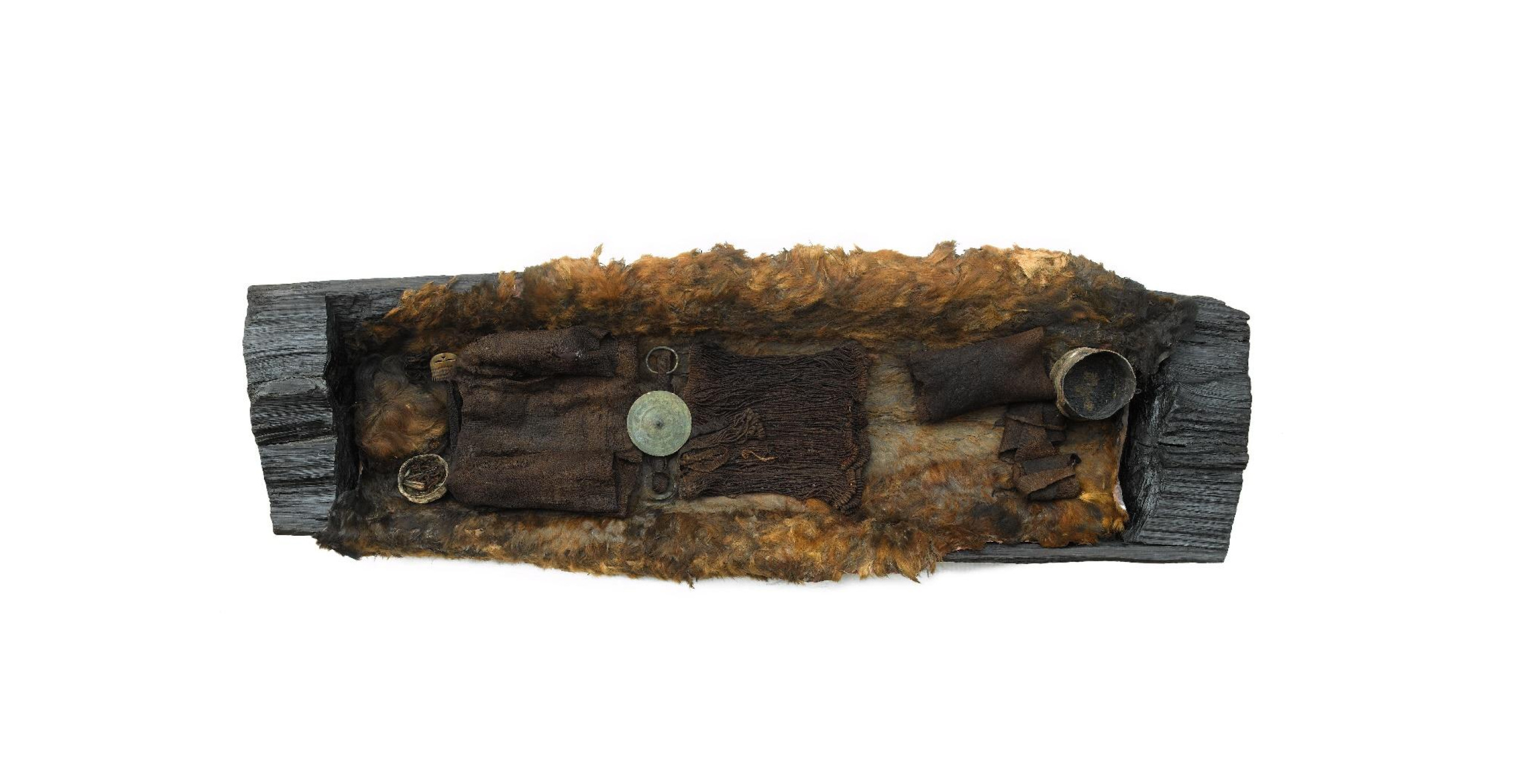
Comment
Your message was sent successfully